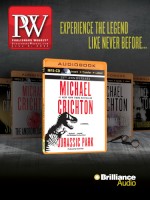The author of For Real (Riptide) talks about his blazingly hot and emotionally authentic May-December male/male erotic BDSM romance.
What makes a great sex scene?
I tend to think what makes a sex scene effective is the same as what makes any other scene effective, which is a sense of character and a sense of what the hell’s going on. It’s one half touchy-feely “Who are these two people and what are they to each other?” and one half really fiddly “How many hands have people got and can they actually reach that from there?” Writing sex scenes isn’t in itself particularly sexy, it’s quite logistics-y.
How do you write a good scene about bad sex?
Bad sex is difficult because in fiction, especially in erotic romance, there is a strong tendency for the goodness or badness of sex to be symbolic. If it’s terrible, it’s sending a message like “You should not be doing this!” But people have bad sex for good reasons and good sex for bad reasons. You’ve got two humans who are doing human stuff with each other, and if it doesn’t work out that’s obviously suboptimal, but it doesn’t make anyone Satan.
In For Real, you’ve turned around the obvious story by having the lost young person be the dominant, and the jaded older person be the submissive. Why?
It’s a story that’s less commonly told. Usually [in fiction] the dom is engaged in the experience of power and the sub is callow and needs to be taught, but that’s not reflective of everyone’s experiences. One of the thoughts I had in mind while working on the book was about how people make judgments based on what others do. So [telling the story this way] is about challenging those expectations. The stereotype of the dominant is that it’s the manly role, associated with things like status and respect and strength. The submissive role is seen as subservient, which it doesn’t have to be. Ultimately it’s just what people like sexually, and what you like sexually doesn’t have to be what you like the rest of the time. And it doesn’t have to be weak to want to be submissive.
It’s hard to look at For Real without putting it in the context of the Fifty Shades of Grey phenomenon. Do you feel like having that influence in mainstream culture changes the audience for your novel, or your approach?
My feeling on the Fifty Shades phenomenon is that it was the market correcting itself. There were a lot of people out there who were obviously interested in that kind of book, but weren’t aware that quite a lot of that stuff already existed. I was writing For Real as someone already aware of BDSM erotic fiction. One thing that Fifty Shades did to the genre was to create different expectations around the idea of kink being more of a plot point and less of an assumed part of character sexualities, the idea that kink was something that required an explanation or justification. Genuinely, you don’t have to explain why someone is into submission or dominance any more than you have to explain why someone isn’t into those things. One reason there’s so much other stuff going on in For Real is because I wanted to take the fact that these two people are into BDSM for granted, to write an erotic love story about two people who are into BDSM rather than a story about kink.
Vicki Borah Bloom is a frequent reviewer of contemporary and historical romance, erotica, and LGBTQ fiction for PW.



 Volume 262
Issue 23
06/08/2015
Volume 262
Issue 23
06/08/2015





